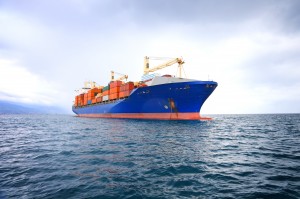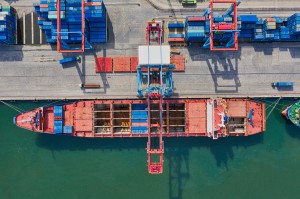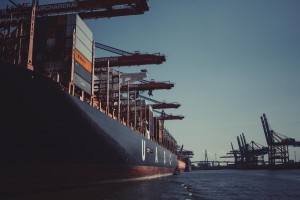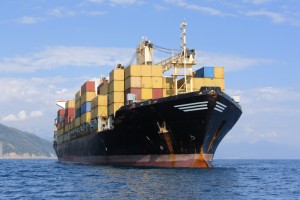In Southeast Asia, Indonesia, Malaysia, Singapore, Thailand, and Vietnam have relatively close trade relations with my country, accounting for more than 80% of trade relations between Southeast Asia and my country. In the trade and transportation from China to Southeast Asia, sea transportation has become the preferred choice due to its advantages such as lower costs and more complete services.
Among them, container transportation is one of the main ways of shipping services from China to Southeast Asia. So, how many modes of transportation are there for international shipping containers?
1. According to the packing method of the goods, it is divided into two types
FCL (Full Container Load)
It refers to the container that is consigned in units of boxes after the cargo party fills the whole container with the goods. It is usually used when the owner has enough goods to load one or several full containers, and usually rents a certain container from the carrier or container leasing company. After transporting the empty container to the factory or warehouse, under the supervision of customs officers, the owner of the cargo puts the cargo in the container, locks it, seals it with aluminum, then hands it over to the carrier and obtains a receipt at the station, and then exchanges the bill of lading or waybill with the receipt.
LCL (Less Than Container Load)
It means that after the carrier (or agent) accepts the small-ticket freight consigned by the consignor with a quantity less than a full container, it sorts it out according to the nature and destination of the cargo. Concentrate the goods going to the same destination in a certain quantity and pack them into boxes. Because the goods of different owners are assembled together in a box, it is called LCL. The classification, sorting, concentration, packing (unpacking), and delivery of LCL cargo are all carried out at the carrier’s wharf container freight station or inland container transfer station.
2.Delivery of container cargo
According to the different modes of container transportation, the handover methods are also differentiated, which can be roughly divided into the following four categories:
FCL delivery, FCL pick up
The owner will hand over the full container to the carrier, and the consignee will receive the same full container at the destination. The packing and unpacking of the goods are the responsibility of the seller.
LCL delivery and unpacking
The consignor will hand over the consignment goods with less than FCL to the carrier at the container freight station or inland transfer station, and the carrier will be responsible for LCL and packing (Stuffing, Vanning), and transport it to the destination cargo station or inland transfer station After that, the carrier will be responsible for unpacking (Unstuffing, Devantting). The packing and unpacking of the goods are the responsibility of the carrier.
FCL delivery, unpacking
The owner will hand over the full container to the carrier, and at the destination container freight station or inland transfer station, the carrier will be responsible for unpacking, and each consignee will receive the goods with a receipt.
LCL delivery, FCL delivery
The consignor will hand over the consignment goods with less than FCL to the carrier at the container freight station or inland transfer station. The carrier will adjust the classification and assemble the goods from the same consignee into a FCL. After transporting to the destination, the carrier will The person is delivered by the whole box, and the consignee is received by the whole box.
3.Delivery point of container cargo
According to the different regulations of trade conditions, the delivery point of container cargo is also distinguished, generally divided into the following categories:
(1) Door to Door
From the sender’s factory or warehouse to the consignee’s factory or warehouse;
(2) Door to CY
The container yard from the shipper’s factory or warehouse to the destination or unloading port;
(3) Door to CFS
A container freight station from the shipper’s factory or warehouse to the destination or port of unloading;
(4) CY to Door
From the container yard at the place of departure or loading port to the consignee’s factory or warehouse;
(5) CY to CY
From a yard at the place of departure or loading port to a container yard at the destination or port of discharge;
(6) CY to CFS
From a container yard at the origin or loading port to a container freight station at the destination or unloading port.
(7) CFS to Door
From the container freight station at the place of origin or loading port to the consignee’s factory or warehouse;
(8) CFS to CY
From a container freight station at the origin or port of loading to a container yard at the destination or port of unloading;
(9) CFS to CFS
From a container freight station at the origin or loading port to a container freight station at the destination or unloading port.
Sea transportation is a commonly used transportation method in export logistics from China to Southeast Asia, but how to choose a logistics solution that suits you? How to achieve the best cost-effective cargo transportation? You need a professional international freight forwarding company to ensure the smooth realization of all links in the shipping process. Shenzhen Focus Global Logistics Corporation Ltd. has 21 years of experience in international freight forwarding, and has an industry-leading advantage in China’s cross-border shipping services. It specializes in providing customers with one-stop cross-border logistics solutions. If you have any business contacts, please contact 0755-29303225 , E-mail: info@view-scm.com, looking forward to cooperating with you!
Post time: May-18-2023









